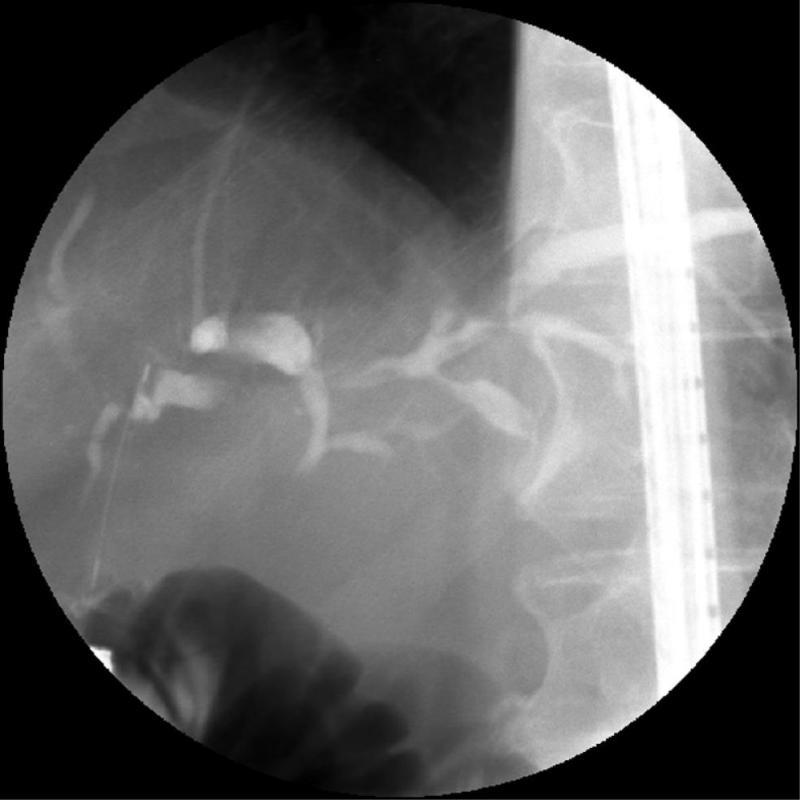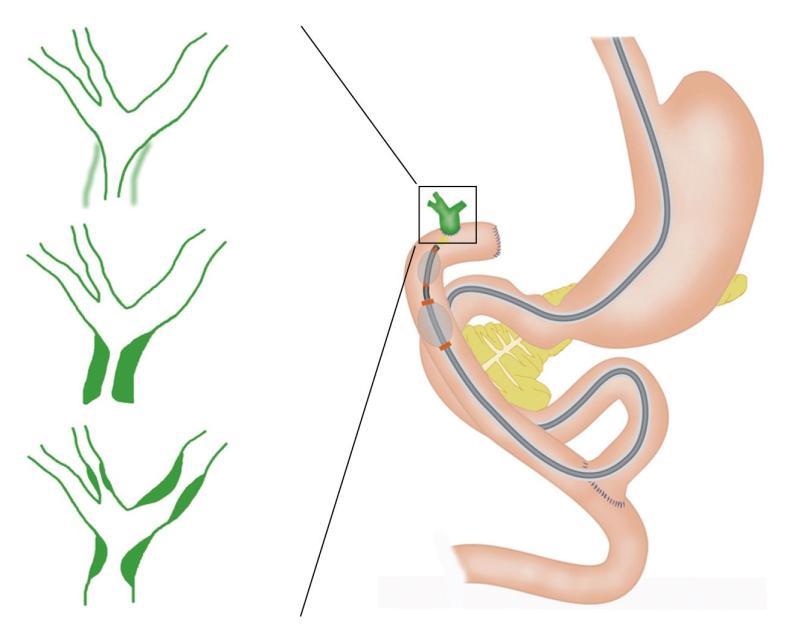Copyright
©2011 Baishideng Publishing Group Co.
World J Gastrointest Endosc. Nov 16, 2011; 3(11): 213-219
Published online Nov 16, 2011. doi: 10.4253/wjge.v3.i11.213
Published online Nov 16, 2011. doi: 10.4253/wjge.v3.i11.213
Figure 1 Small hepaticojejunostomy opening.
A guidewire barely traverses it. This is a type A hepaticojejunostomy.
Figure 2 Wide opening hepaticojejunostomy (type B).
The tip of the catheter shows the lower rim of the large hepaticojejunostomy opening. Above the hepaticojejunostomy there is a visible stenosis, which is clearly supra-anastomotic (type S). The length of the stenosis will be determined with a cholangiography (e.g., type 1 short or type 2 long).
Figure 3 Short stricture of the distal bile duct at the level of the hepaticojejunostomy (type 1).
Figure 4 Long stricture of the hepaticojejunostomy (type 2).
Figure 5 Intrahepatic bile duct strictures not affecting the hepaticojejunostomy in a patient with primary sclerosing cholangitis (type 3).
Figure 6 The small hepaticojejunostomy orifice (type A) barely permits the passage of a 0.
035 inch wire (A), short stricture (type 1) on the cholangiogram (B), corresponding MRC image (C) and dilation with constant radial expansion-through the scope balloon (D). This is an example of a type A1 hepaticojejunostomy stricture.
Figure 7 Small hepaticojejunostomy orifice (type A) (A).
The 7 Fr plastic stent is seen in the small bowel lumen (B). This is an example of a type A2 hepaticojejunostomy stricture.
Figure 8 Wide opening of the hepaticojejunostomy (type B) (A) accompanied with short (cholangiographic type 1), supra-anastomotic stricture (type S) with dilated proximal bile duct and visible stone (B).
After dilation of the stricture with a constant radial expansion-through the scope balloon, the stones were extracted with Dormia basket (C). This is an example of a B1 hepaticojejunostomy stricture.
Figure 9 This patient had an exceptionally large hepaticojejunostomy (type C) (A), permitting the careful insertion of tip of the scope to perform a direct cholangioscopy (B).
This is a type C hepaticojejunostomy without strictures (type 0).
Figure 10 This figure exemplifies the proposed classification (adapted from[18]).
- Citation: Mönkemüller K, Jovanovic I. Endoscopic and retrograde cholangiographic appearance of hepaticojejunostomy strictures: A practical classification. World J Gastrointest Endosc 2011; 3(11): 213-219
- URL: https://www.wjgnet.com/1948-5190/full/v3/i11/213.htm
- DOI: https://dx.doi.org/10.4253/wjge.v3.i11.213


















